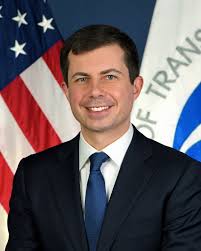
Introduction
In the realm of U.S. transportation, Pete Buttigieg has emerged as a significant figure since his appointment as Secretary of Transportation in March 2021. His role involves not only improving infrastructure but also steering the nation towards sustainable and inclusive transportation solutions. With growing concerns over climate change and urban congestion, Buttigieg’s policies have become more relevant than ever, highlighting the importance of modern transportation management.
Key Policies and Initiatives
Among Buttigieg’s prominent initiatives is the implementation of the Infrastructure Investment and Jobs Act, which allocates approximately $1.2 trillion to improve public transport and roads across the country. This act aims at replacing aging infrastructure, promoting electric vehicles, and enhancing public transportation accessibility. As part of encouraging sustainability, Buttigieg’s department is focused on expanding EV charging networks and funding mass transit systems that can reduce carbon footprints.
Furthermore, Buttigieg has emphasized equity within transportation. He believes that transportation is inherently linked to social justice and strives to address historical inequities in how communities are served by transit systems. High-density areas often face significant congestion, while underprivileged communities struggle with minimal access to public transport. Buttigieg’s advocacy for increased funding for underserved areas aims to create a more equitable transportation network.
Recent Developments
In recent news, Buttigieg has engaged in discussions about new policies aimed at improving rail worker safety following a series of high-profile train derailments. His call for stronger safety regulations reflects a broader effort to ensure the safety of transportation systems across the board. The Secretary has also been vocal about the importance of additional investments in rail infrastructure, seeing passenger and freight rail as critical components of a multi-modal transportation strategy.
Conclusion
As the Biden Administration continues to press for infrastructure improvements, Pete Buttigieg’s leadership at the Department of Transportation remains vital. His commitment to sustainability, equity, and safety positions him as a driving force in shaping the future landscape of transportation in the U.S. Observers and constituents alike are eager to see how these initiatives unfold and their potential impacts on everyday lives. Ultimately, Buttigieg’s influence extends beyond policy; it signifies a cultural shift in how transportation is viewed in relation to social equity and environmental stewardship.



